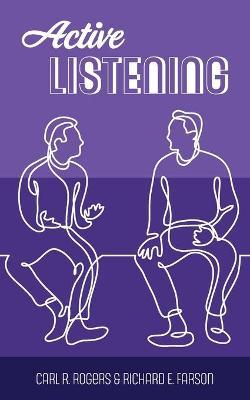Your Thoughts and Feelings Are Never Clearer Than When You Share Them With Someone Else.
When people talk, listen completely. Most people never listen. Earnest Hemingway.
But why is this so? Most of us want to listen so what goes wrong and is there a solution?
Well yes, there is a solution and it started back in 1957, made a huge leap forward in 1994 and recently, neuroscience has confirmed and added to our knowledge.
Active Listening
In 1957 Carl Rogers and Richard Farson coined the term active listening.
It was a method to get us inside the speaker, to grasp, from their point of view, just what they are communicating to us.
In 1994 I was invited to attend a workshop by Dr John Savage teaching Deep Structure Listening which is also referred to as Deep Listening, a more powerful way of listening. Brainy Gecko’s Mindful Listening online video course, based on Dr Savage’s workshop and current neuroscience.
Deep Listening – a Powerful way of Listening
OK, what is Deep Listening, and why is it essential for all personal and professional relationships?
“…Active Listening became mainstream but has now paved the way for a more radical and powerful way of listening – called “Deep Listening” Ipek Serifsoy, PhD
Words alone are inadequate
Words alone can never fully express the message we want to convey because every message we send must be encoded into words filtered through our feelings, inferences, attitudes, and thoughts.
The words themselves only communicate a part of the intended message. The remainder is communicated subconsciously through body language.
Avoiding Conflict
The problem is that the listener makes assumptions based on these signs’ interpreting what the speaker means based on what they hear, see and feel.
The problem starts when people act on the assumption as if it were true!
This often leads to misunderstanding, argument conflict, which is why Deep Listening is so complex.
Deep Listening and the magic of metaphors.
People tell stories, right? And we use metaphors to help clarify what we are trying to say. For example, a mother described her child ‘s firs day at school “He was like a fish out of water”,
The metaphors we use are loaded with hidden but valuable information.
Metaphors are the unconscious speaking.
Language
The words you use also give the Deep Listener a tremendous amount of free information.
By listening to the metaphors, repeated words and phrases and opposites, Deep Listeners can make an educated guess at the issues facing the person and what is unsaid.
We recover this information by using carefully crafted questions to check assumptions with the speaker we can bring the deeper meaning and unspoken thoughts into the speakers conscious awareness. They are then able to gain control of their emotions and make a rational choice
Deep Listening
- Validates and values the speaker
- Builds rapport and trust
- Creates growth
Become a Deep Listener today.
Take Action – Get All Three and Save
Find out how to establish and maintain rich, rewarding connections. Visit brainygecko.com and check out the three courses we offer.
Click these links to learn more about the individual courses. Managing Change, Mindful Communication, The Departure Lounge.
Or click the button below get all three and save.



Leave a Reply
You must be logged in to post a comment.